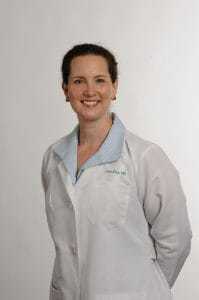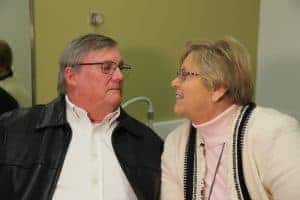Eighteen years ago, Gail Clayton received news that changed her life. Looking back, she says finding out she had breast cancer marked the beginning of new perspectives.
“When I was first diagnosed with cancer, it wasn’t the end of life as so many people think. To me, it was the beginning of life.”
Clayton and her husband, Raymond, have been married 46 years. He calls UAMS one of Arkansas’ best kept secrets.
“I don’t think people realize how amazing this institution is,” Clayton said. “You become friends with your doctors and nurses. It takes a village and I believe that village is right within these walls at UAMS.

She had breast cancer twice and was recently diagnosed with ovarian cancer. That prompted Clayton’s oncologist, Laura Hutchins, M.D., to refer her to gynecologic oncologist Kristin Zorn, M.D., associate professor and division director in the College of Medicine Department of Obstetrics and Gynecology.
“Anytime we see a patient with a new diagnosis of cancer in the ovaries, fallopian tubes or the peritoneum (the internal lining of the abdomen), we think of a possible hereditary source for that cancer,” Zorn said.
Clayton and Zorn discussed genetic counseling and ultimately found Clayton had a mutation in one of the BRCA genes, commonly known as the breast cancer genes. Every person is born with the BRCA1 and BRCA2 genes, but women who inherit mutations of the genes have an increased chance of developing breast, ovarian, and other cancers.
Researchers’ knowledge about these genetic mutations has helped lead to development of a new class of drugs known as PARP inhibitors.

“PARP inhibitors capitalize on the genetic defect that’s already present in people who carry one of these mutations,” Zorn said. “It helps to kill the cancer cells that are accumulating DNA damage.”
There are three types of PARP inhibitors that have been FDA-approved over the past few years: olaparib, rucaparib and niraparib. Clayton is a part of a clinical trial that includes her taking olaparib.
“With PARP inhibitors, we first focused on people who carry a BRCA or similar mutation. We’re now finding many patients with ovarian cancer who do not have a mutation are responding to the drugs.”
Another advantage of this new class of drugs is that they can be taken orally rather than through intravenous infusion, making it more convenient for patients. This works especially well for Clayton who spends a great deal of her time seeing the world.

“If someone says go, we pack a bag and go.”
Since her first diagnosis, Clayton says she takes nothing for granted and began living in a way she may not have if not for the illness. She and Raymond Clayton have made lots of memories abroad. Sometimes their adult son Randy joins them.
“We’ve been to the Baltic States, Russia, Berlin, Sweden…”
She’s responded well to the clinical trial and shows no indications of slowing down.
“…England, Paris, the Caribbean, Ireland. It’s been a journey.”
“Part of the reason I’m so passionate about practicing at a place like UAMS, is that it helps us bring cutting-edge therapies to our patients,” Zorn said. “Sometimes we’re talking about a surgical advance, sometimes we’re talking about an advance in treatment.”
Zorn says genetic counseling and testing has become a standard of care in some of the most common gynecological cancers.
“While many parts of the country are having trouble keeping up with the change in the standard of care, UAMS has a genetic counselor embedded in our clinic so that we can accomplish that.”
“The way I see it,” said Clayton, “Even if the clinical trial didn’t work for me, maybe it would work for someone else. I’m grateful for the strides scientists have made in treating this disease.”
This clinical trial was developed through the NRG Oncology cooperative trial group of the National Cancer Institute. The only access to this trial in Arkansas is at UAMS.
